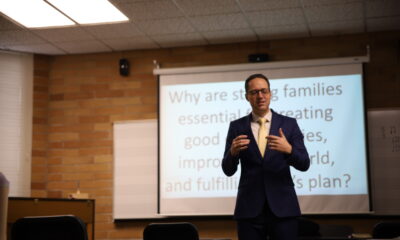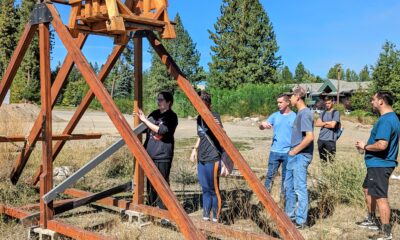Many people have hobbies such as knitting, writing, playing an instrument and so on. Here at NIC we even have a mycophile, or someone who hunts wild, edible mushrooms.
Tim Gerlitz, president of the North Idaho mycological association, gave a presentation on proper handling, identification, and safety of hunting wild mushrooms.
Mycology is the study of fungus which includes mushrooms.
The north Idaho mycological association was founded on campus in the 1960’s by Kit Scates and is a group of people who enjoy hunting mushrooms and educating and aiding others in mushroom hunting adventures.
The club has about 45-50 active members and meets six times a year.
Gerlitz has been president many times since he joined the club 25 years ago and has been giving presentations about mushroom hunting for 15 years.
Some mistakes Gerlitz said people make while hunting include a lack of field guides, taking risks with identification by not being positive about a species before eating it, mixing species, and like any food, eating too many mushrooms at once.
Being absolutely positive about the identification of a species and not going out alone or without a knowledgeable mushroom hunter was stressed heavily through the presentation. It is very easy to mistake a deadly mushroom for an edible one.
“You can eat any mushroom once,” stressed Gerlitz.
The most deadly mushroom is the amanita phalloides or “death cap” and can kill someone within a week. If digested it damages the kidney and liver and the only antidote is an organ transplant. This mushroom looks very similar to edible ones so it is important to know the difference and features of each wild mushroom.
With a warning about the deadly mushrooms Gerlitz also presented many edible and according to him, “delicious” ones that can be found in the area such as the honey mushroom.
The honey mushroom or Armillaria, is the largest living organism on earth and grows in clusters. It is about 2400 years old and spans over 1660 football fields. The agaricus bisporus was also mentioned which is the type of mushrooms sold in grocery stores.
The life cycle of mushrooms, many more species and their features such as the morel, and even ways to prepare and eat these mushrooms was presented.
“I learned a lot,” said student Paula Flodquist.
After the presentation audience members had an opportunity to look at some “lobster” mushrooms which are nicknamed for their distinct smell and some say they even taste like seafood.
The audience was also encouraged to bring items to donate the food pantry.













